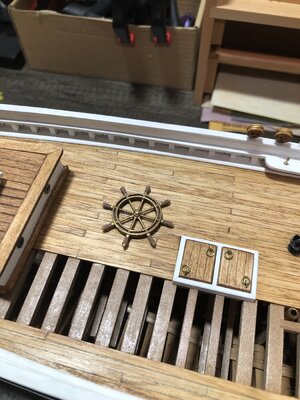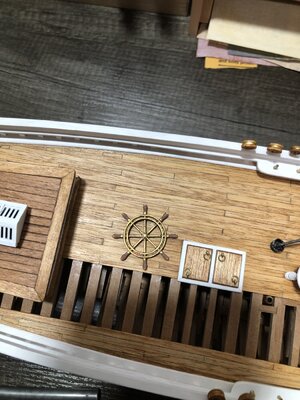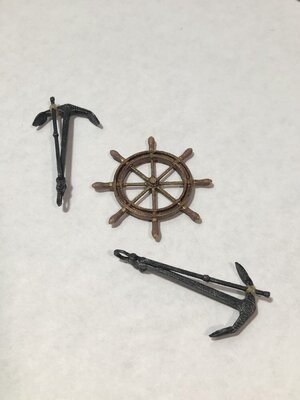Wow!@Peter Voogt @Henk Liebre @Dean62 Hello Gentlemen
Before going any further, I would like to express my sincere thanks on behalf of myself and I am sure all the other Bluenose builders for the sterling work that you have put into the Bluenose's steering wheel. It is very warmly appreciated! Thank You!
Also try to understand that I am in bit of a predicament with regards to the other wheel that I mentioned.
1. First of all who are the "critters that I am referring to? They are an international, non-profit oriented, group of builders - independent to any forum to which they may or may not belong - who functions as a "Think Tank" or a "Research and Development Group" (for want of better terminology) for model shipbuilding. Whilst there are some projects with which they are intrinsically involved, they are not affiliated to one project per se; rather it is a case of seeing how they can enhance model shipbuilding as a whole. They prefer to remain anonymous and I respect their wishes.
2. As to how they arrived at the wheel that they designed, I believe it would be a case of looking a gift horse in the mouth if I were to question that. Rest assured that they have not just lucratively arrived at this design of the wheel. I actually received this correspondence from them this morning.
There is also writing on the wheel that can barely be seen (lower left). We think it says Bluenose "something".. We did not include it since it was so small. There are also a couple of grooves that run alongside the "garden hose" that we omitted for simplicity. The wheel itself was made from a single casting, most likely iron (or perhaps bronze). The handles are wood and held on by pins at the base. The caps on the tops of the handles seem to be polished brass. Based on notes from maritime historian and architect Howard Chapelle the overall wheel would have been a silver color (attached photo).
These are our interpretations after looking at ALL relevant photos and reference material available. Not just a single photo.
View attachment 238771
3. Therefore, I suggest we look at the finished/printed example and then everyone is free to choose which they wheel they want to or prefer to choose.
Last edited:







